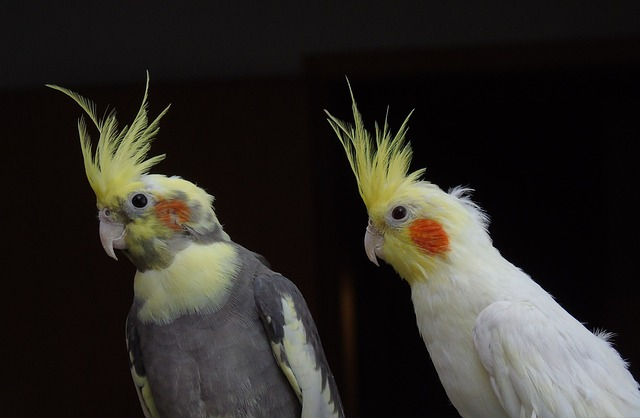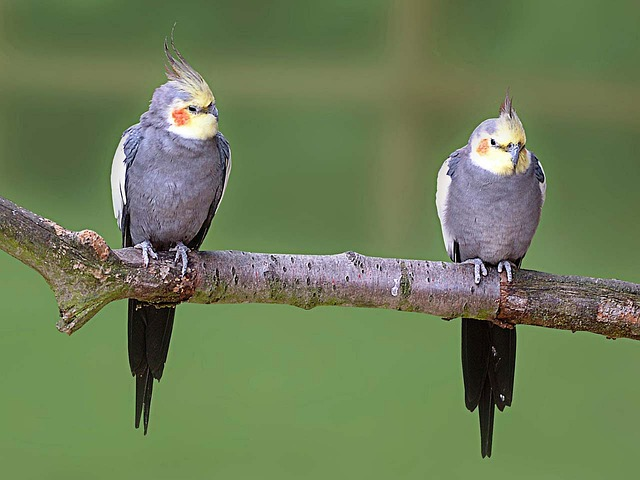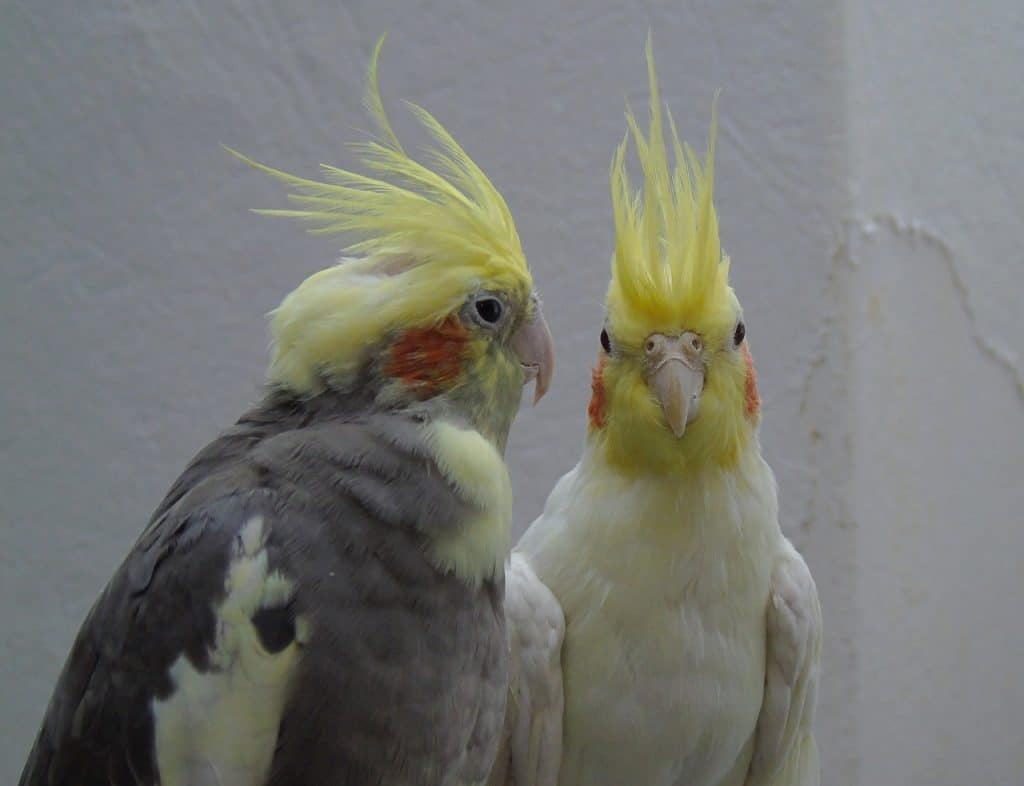Cockatiels are popular pet birds known for their friendly and sociable nature. As social animals, they thrive in the company of other birds. However, it is essential to know which birds that get along with cockatiels to ensure the well-being of your feathered friends. This article will discuss birds that get along with cockatiels and provide tips on housing and caring for different bird species together.

Birds That Get Along With Cockatiels: Compatible Bird Species
When looking for a companion bird for your cockatiel, it’s essential to choose one that shares similar characteristics, such as size, temperament, and social needs. Some bird species are known to get along well with cockatiels include:
1. Budgerigars (Budgies): These small birds are among the most popular pet birds and are known for their friendly and playful nature. Budgies tend to get along well with cockatiels, especially if they are introduced to each other at a young age.
2. Zebra Finches: These small, social birds gently coexist with cockatiels and are often housed together in large aviaries. However, it is essential to monitor their interactions, as zebra finches are smaller birds and may require separate feeding and nesting areas.
3. Bourke Parakeets: Another species from the same family, Bourke parrots, are gentle and peaceful birds that can make an excellent housing companion for cockatiels. They are about the same size and have similar social needs, making them a compatible choice.
4. Red Crowned Parakeets: These parrot species are known for their friendly and non-aggressive nature. They can coexist peacefully with cockatiels in a spacious aviary, provided they have enough space and resources.
5. Turquoise Parrots: As members of the parrot family, turquoise parrots share many similarities with cockatiels and can make ideal companion birds. They are also small in size and have a calm temperament, which helps them get along with other bird species.
Factors to Consider When Housing Cockatiels with Other Birds
While numerous birds might get along with cockatiels, it is crucial to consider individual birds’ needs, preferences, and personalities before introducing them to a new bird. Here are some factors to keep in mind:
1. Cage Size: If housing cockatiels with other birds, a larger cage or aviary is essential to provide enough space for all feathered friends. This prevents territorial disputes and ensures that each bird has room to fly, play, and rest comfortably.
2. Separate Feeding and Nesting Areas: Providing separate feeding and nesting areas for different species reduces competition for resources and prevents more aggressive birds from dominating others.
3. Monitoring Interactions: Regularly observe the interactions between your cockatiel and other birds to ensure they are getting along well. If one bird shows signs of aggression or stress, it might be necessary to house them in separate cages or consider finding a different companion for your lonely cockatiel.
4. Introducing Birds Slowly: Introduce new birds gradually to minimize stress and allow them to get used to each other’s presence. This can be done by placing their cages next to each other initially and then allowing supervised interactions under close observation.
5. Same Species Compatibility: In some cases, the best companion for a cockatiel might be another cockatiel. Two cockatiels can often bond strongly and enjoy each other’s company while reducing the risk of aggression or injury associated with other species.

It’s a Good Idea to Get a Companion for a Cockatiel
cockatiels are social birds that live best in pairs or groups. Cockatiels can technically live alone, but they become bored easily and prefer the company of another bird. Although a solo cockatiel will bond closely with its owner, it would form an even closer bond with another bird.
Although it may sting your ego a little, if you have established a strong bond with your cockatiel and decide to get him or her another bird companion, be aware that the new arrival will likely replace you as your cockatiel’s best friend. Just keep in mind that birds naturally gravitate toward other birds for company rather than humans. So don’t let your envy get in the way of their happiness!
Tips for Keeping Your Birds Happy
Cockatiels and other similar sized birds, such as parakeets, love to climb onto a T-stand outside of their cages. If you ever let your bird out of its cage, make sure that it is supervised so that it doesn’t get into any accidents.
Keeping your birds content inside their cage can be as easy as giving them one or two toys to play with. Try and set aside at least an hour every day where you can spend time playing with them and holding them. You should also provide them with a shallow bowl of warm water to bathing in twice a week, or alternatively, mist then gently using a spray bottle filled with warm water.
Biting and scratching are possible when caring for your birds, so handle them with caution. If you have little children at home, be sure to watch them while they’re around the birds so that they get treated correctly. Before and after handling your birds, wash your hands well to prevent the spread of germs.
Also, avoid putting on the same cage lovebirds, larger parrots, canaries, more aggressive birds and other bird species that are larger birds with the housing cockatiels.
- Extra-Large Wrought Iron CageWith a large size of 30.3 L x 18 W x 51.2 H and a bar spacing of 3/8, this strong wrought iron cage offers a safe and spacious mansion for multiple birds/small animals. The 3-tier design expands the usable area vertically and creates more spaces for pets to climb and explore.
- Deluxe Cage For Small Animals & BirdsThis huge pet cage can accommodate more than five small to medium birds like lovebirds, conures, parakeets, budgies, cockatiels or small animals like sugar gliders, rats, squirrels, etc.
- Safe & Sweet HomeEvery door is secured with locks to make sure your little escape artists stay safely in their home when unattended. Moreover, the bar spacing of 1cm/ 3/8 is decent for small to medium birds or small animals.
- Solid Metal Cage ConstructionThe large bird cage is crafted from wrought iron with water- and oxidant-resistant finish for improved strength and high durability.
- Must-Have Mobility & Added StorageBenefit from the mobile stand with an open shelf, this extra-large pet cage gains convenient mobility and additional storage space for pet accessories.
Final Thoughts on Birds That Get Along With Cockatiels
Now that you know which birds may live together in peace with your cockatiel, go out and choose your new bird buddy! Take things step by step when putting the two birds together and allowing them to cohabit. If you follow the guidelines outlined above, your cockatiel should be pleased with the new creature you bring home!




